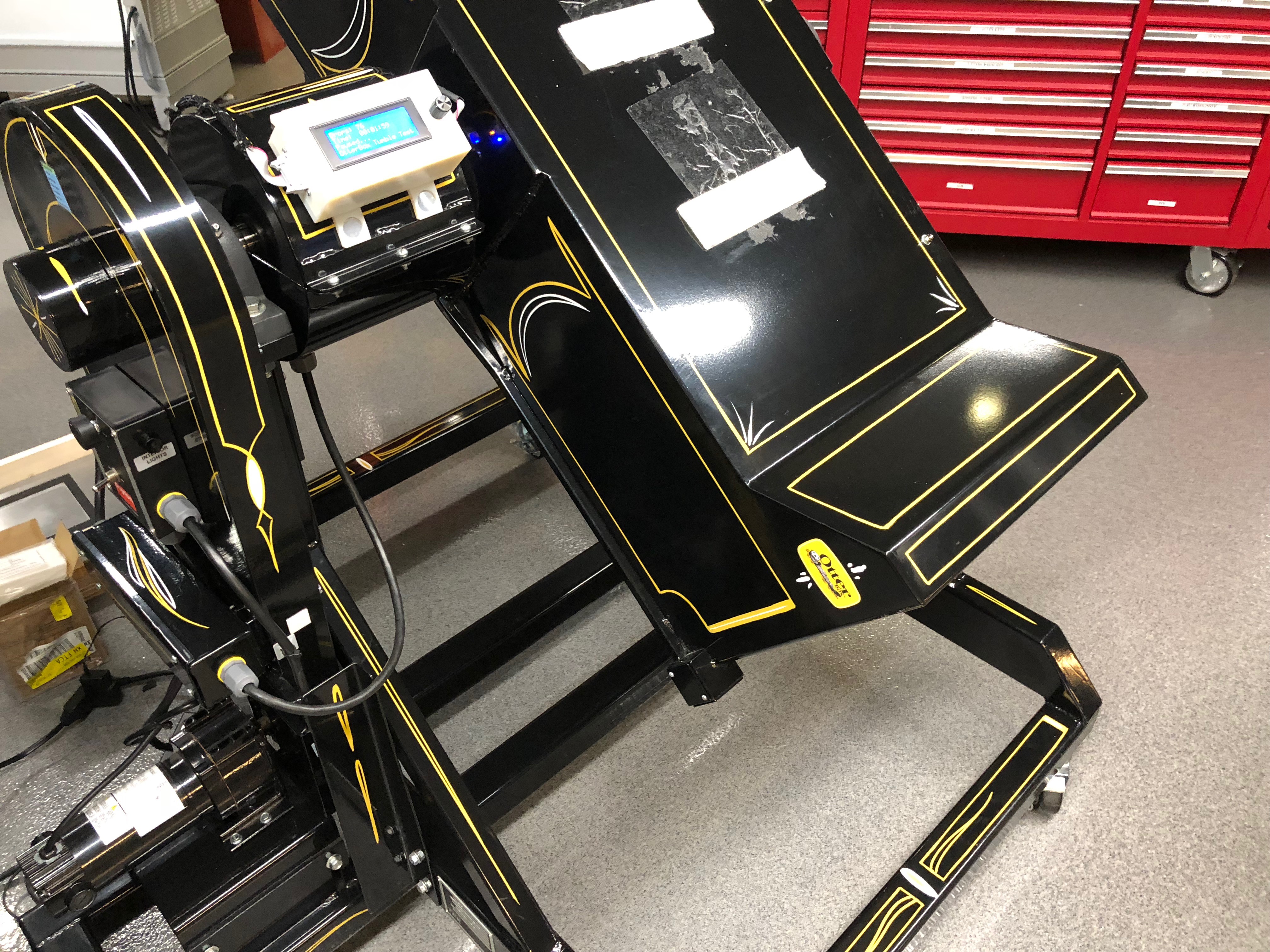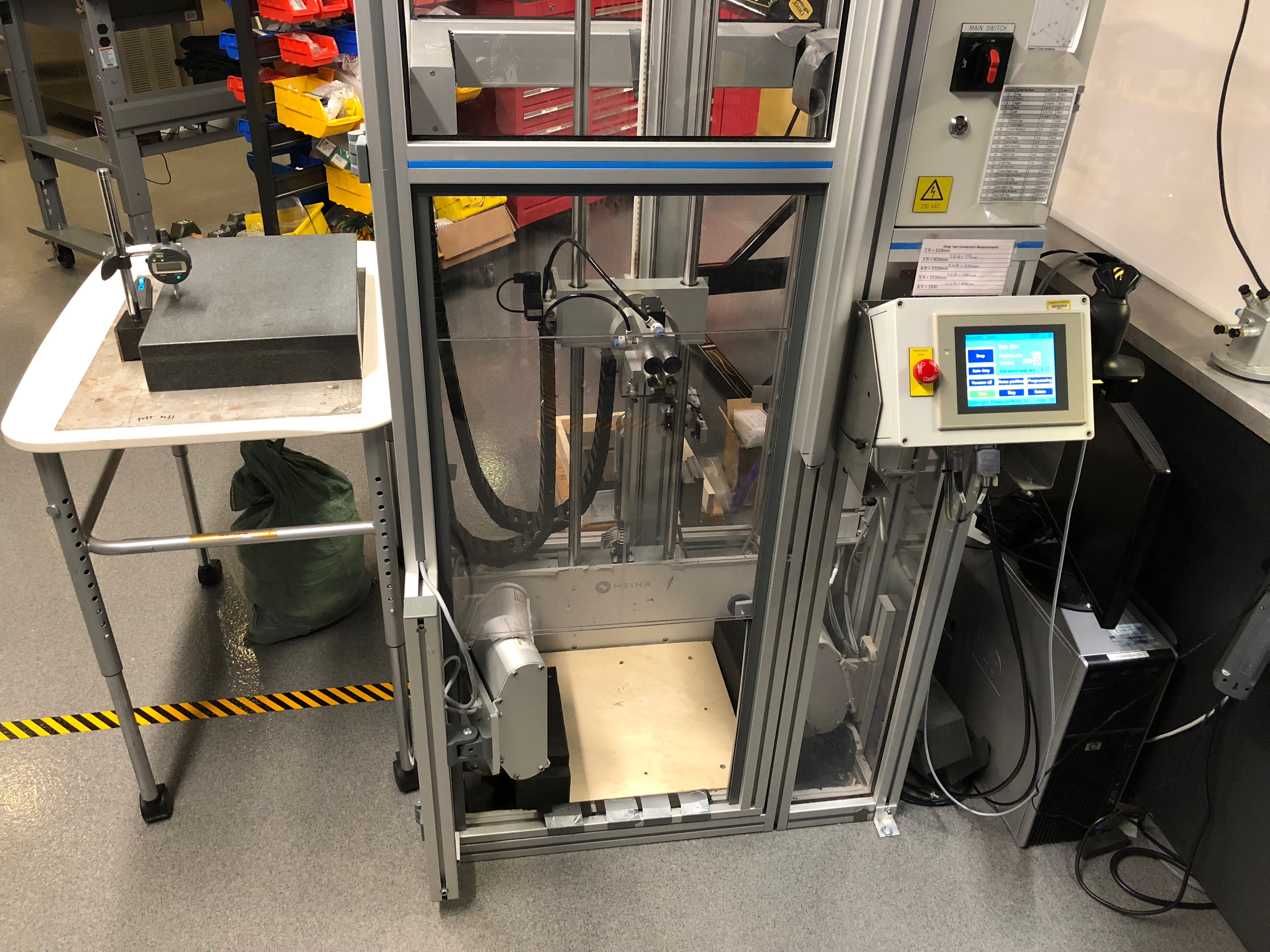Inside Otterbox’s “PIT Lab,” you’ll find everything from an otter wearing a football helmet to pressurized water-testing tanks, ovens that simulate triple-degree temperatures, robots that purposefully throw iPhones on the ground, and a rather unique machine that simulates someone dropping their purse (and everything in it).
“We had to come up with a lot of that testing. Some of it is industry standard. But, a lot of it is over the years of just our experience and what makes sense and what's real life,” says Paul Staggers, the engineering manager of the PIT lab.
PIT stands for prototype innovate and test. And that’s exactly what the engineers at Otterbox do inside their Fort Collins campus.

There are ovens that simulate extreme hot (and cold) temperatures and machines that rub various textiles on the case material to test for abrasion or clarity.
Engineers keep track of various cases and how many times they've put the phone in and out of it.
There's a table filled with everything from brake fluid to mascara, too, just to see how those chemicals may affect a phone cases' material.
“We test for a lot of environmental conditions for our cases, and also how robust the case is in drop, and with abrasion, chemicals. Just overall usability,” Staggers says.
There are specialized engineers who attach both “mule” phones (i.e. dummy phones) and REAL iPhones to a robot that slams it down from various heights, testing and researching how certain cell phone cases will hold up to various drops from human hands.

There are tanks of water that simulate submerging a cased phone at the bottom of a swimming pool.
The idea is to figure out what best represents real life.
“We had to come up with a lot of that testing. Some of it is industry standard. But a lot of it is over the years of just our experience and what makes sense and what’s real life,” Staggers said.
One of those real-life ideas is Otterbox’s “Purse Drop Tester,” a machine designed to toss a phone, hairbrush, nail file, spare change, and other miscellaneous objects around in precisely the same way you may accidentally drop or toss your purse onto the floor.

“That’s not an industry standard, but that’s certainly something we see in real life, people throwing a cell phone into their purse and jangling around with keys and everything else,” Staggers says. “It’s a little bit homebrew maybe, but it’s real life.”
Homebrew works. Especially for a business that has a giant metal slide ornamented with otters in their main lobby. Things here are pretty fun. (Yes, I slid down it and yes, it was awesome)

Plenty of Otterbox testing takes place off-site, too.
For their new line of rugged outdoor coolers, engineers spent an afternoon throwing the coolers off the back of a moving pick-up truck to test how they’d fare.
In another part of campus, they test dropping phones from two stories off a building.
Aside from attempting to break phones (yes, even iPhone X's), many engineers work on the case construction.
Brycen Smith, Otterbox’s engineering technician manager, helps manage the prototypes built in the company’s state-of-the-art 3D printers. The poly-jet printers are nearly always humming along inside the lab.
Their newest one is one of the largest in the world- it can build an entire cooler in one piece.
The 3D printed prototypes help engineers understand how a case will look and work. Then, those engineers can translate what has been 3D printed into a valid production material to be made for you and me to use every day.
It’s a very specific process - and one that can be thrown off at just a millimeter.
“Our design tolerances are often within the thickness of a sheet of paper,” Smith says, explaining that less than a millimeter can be the difference between success and failure.
"On this Defender series case, if you dropped it, it could just fall apart, or it could literally break your fingernail trying to get those two parts apart from each other," he says. "So that’s where 3D printing and the multiple iterations of 3D printed parts come in handy.”
Printing in-house makes for faster turnaround - which is key on something like a new iPhone launch.

Even the otters at Otterbox don’t get a top-secret-super-secret-pre-release device. They're just like us. They watch the announcement.
Then, they have to stand in line with the rest of the eager technophiles to pick up a new device on launch day. Only then can they head back to the office to finalize their cases and get them to market as soon as they can.
“It’s all about time and speed,” according to Smith.
Their 3D printers can also bring to life colors and patterns for new cases. The Otterbox team includes designers who peruse trends to pick the next season’s hottest phone case colors.
“We have a team that works internally here to research fashion and trends. They pick our upcoming colors and different patterns and graphics,” Smith says.
The testing is key to ensuring cases stand up to everything a phone goes through: taking it in and out of pockets, purses and bags... getting sunscreen or makeup on it, dropping it, getting it wet - and just about everything in between.
The PIT lab bookends an Otterbox case's pre-customer life as the very front and back ends of the design process.
“Down here is the very front end of the design process and the very back end of qualifying the part. So, from ideation and prototyping and the creation - all the way down to the test of the final product,” Smith says.
Watch the engineers take you through the lab on our Facebook Live:
It's probably best that little otter in the PIT lab wears a helmet, after all. :)


